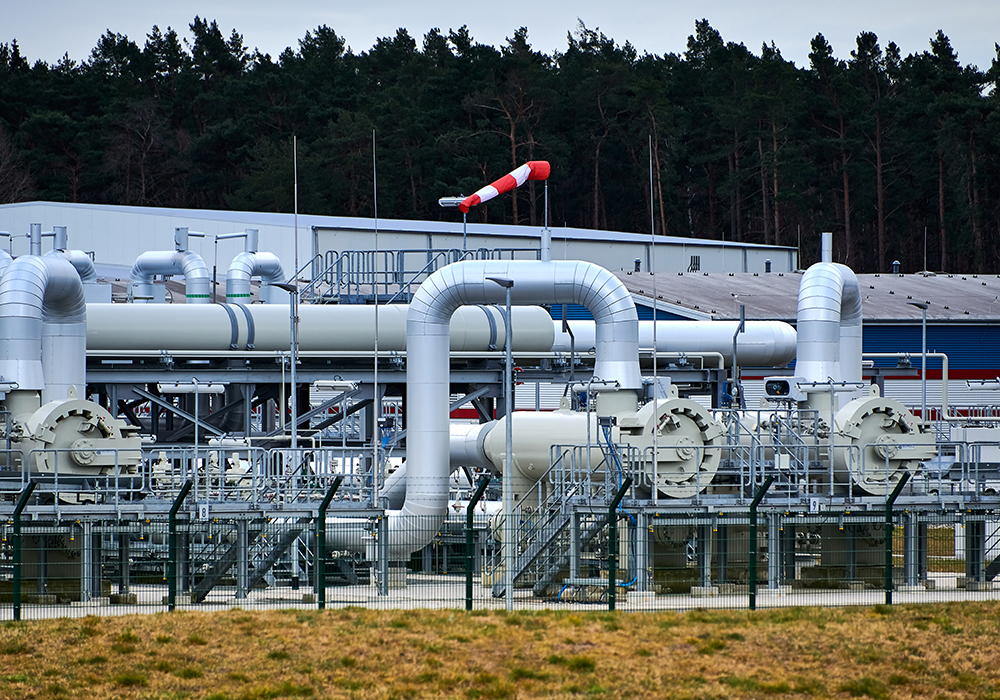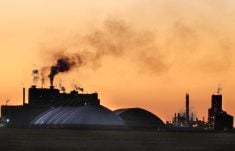Natural gas prices have fallen sharply, helping to lower the cost of making nitrogen fertilizer, but the critical input remains expensive relative to pre-pandemic norms.
Gas futures on the New York Mercantile Exchange for February delivery traded last week at an 18-month low near US$3.10 per million British thermal units (MMBtu) as warmer than normal winter weather in Europe and the United States east coast limited demand.
The North American price last summer peaked near $10 when Europe’s natural gas supply from Russia ended because of that country’s war on Ukraine.
Read Also

U.S. agricultural trade slipping: report
The U.S.’s global trade advantage on agriculture products is eroding and the deficit is expected to grow, says a University of Illinois study
European gas prices spiked to astronomical heights, peaking at about US$96 MMBtu in August as users scrambled to get alternative supply, mostly from the Middle East and the United States.
The crisis forced many adjustments in business and trade flows.
In Europe, heavy users of natural gas, such as ammonia and nitrogen fertilizer producers, had to curtail production and that contributed to the rapidly increasing price of crop nutrients worldwide.
Although food and fertilizer are not included in the trade sanctions on Russia, its exports of crop nutrients were disrupted, further adding to fertilizer price inflation.
The lucrative new gas demand had liquified natural gas (LNG) plants in the U.S. working overtime to fill tankers destined for Europe.
The panic began to calm in the autumn and early winter when Europe was able to fill all its storage infrastructure thanks to increased shipments by pipeline from Norway, new floating storage and regasification units in Germany to offload LNG imports and a massive conservation effort. Some European countries also ramped up coal-fired electricity generation plants.
Natural gas prices fell further when spring-like temperatures blanketed much of the continent through December and much of January.
Dutch TTF natural gas, the European benchmark, fell below $20 last week, the lowest price since September 2021.
Gas prices in North America were also pushed lower by warmer than normal weather in the densely populated northeastern U.S. in the first half of January.
The global fertilizer market is still adjusting from the disruptions caused by Russia’s invasion of Ukraine, but prices for many nutrients have fallen from their 2022 peaks although they remain high.
Can the North American natural gas price continue to fall back to a long-term range of $2 to $3 per MMBtu, which was the norm for most of the time between 2015 and early 2021?
If so, it could provide farmers further relief, at least on nitrogen fertilizers.
But there are several obstacles to reaching that level.
In the immediate picture is the forecast for colder weather in a large part of North America at the end of January that will increase demand for heating gas.
Also, the huge Freeport LNG plant in Texas is expected to re-open soon. A fire there forced it to close last June.
When it is operating at full capacity, it alone can draw two percent of U.S. natural gas production capacity, converting it to LNG for export.
And this spring European countries plan a co-ordinated restocking program, buying natural gas and LNG in a disciplined way to top up storage reservoirs, avoiding the panic buying that forced prices so high last year.
The U.S. Energy Information Administration released a short-term outlook last week forecasting that natural gas benchmark prices will head back above $5 per MMBtu in February and stay above $5 for the rest of the first quarter of the year.
It forecasts the price average will moderate to the $5 level in the second quarter and stay near that level for the rest of the year, resulting in a one-year average of $4.90 per MMBtu, down from the average in 2022 of $6.42.
EIA forecasts an annual average price in 2024 of $4.80.
So, the North American natural gas price is expected to moderate but remain well above where it was before the COVID pandemic.
That will be one factor keeping nitrogen fertilizer prices higher than they were pre pandemic.
Another factor supporting nitrogen costs is Russia’s continuing war on Ukraine that lead to a range of sanctions and restrictions levied by western countries that make Russia’s fertilizer exports more difficult even though there are not specific sanctions on fertilizer.
These sanctions were eased slightly by the European Union in December to make it easier to get Russian fertilizer to poor African countries.
However, a Soviet-era pipeline that carried ammonia from central Russia to the Ukrainian port of Odessa has been closed since the invasion and talks to re-open it are, not surprisingly, bogged down by the increasing hostility in the war.
Also, China restricted exports of urea and diammonium phosphate through 2022 and as this column was written there was no word on what the country’s plans were for this year.















